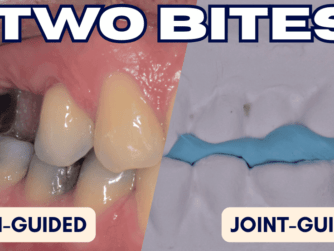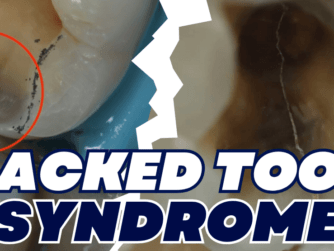Podcast: Play in new window | Download (Duration: 41:50 — 61.1MB)
Subscribe: RSS
Ever heard of fremitus? Wondering what it really means for your patient’s occlusion? In this episode we’re joined again by Dr. Mahmoud Ibrahim, by popular demand, for an insightful discussion on dental fremitus. We understand that this topic can be a bit perplexing, so we’re here to break it down step by step.
We share how we seamlessly integrate a fremitus check into an occlusal assessment, discussing the crucial aspects of when and how to intervene effectively, all while preserving your patient’s chewing space.
Check out our upcoming webinar “Unchippable” to learn about how to prevent chips and breaks on your lovely anterior composite restorations – protrusive.co.uk/unchippable
‘Weakest Link’ study that Jaz and Mahmoud referred to: https://www.tandfonline.com/doi/abs/10.1080/08869634.2000.11746142
The Awake Bruxism (habit breaking) appliance that Jaz uses called MAPA.
More about Fremitus, how it’s classified and occlusal trauma.
Follow Dr. Ibrahim on Instagram @drmoidental
Want to learn more about Occlusion? Head over to occlusion.online.
Need to Read it? Check out the Full Episode Transcript below!
Highlights of the episode:
00:00 Intro
00:39 The Protrusive Dental Pearl
04:17 Dr. Mahmoud Ibrahim
05:17 Mobility vs fremitus
08:26 What is fremitus?
09:52 The PDL
12:54 The weakest link theory
16:21 Checking for fremitus
17:19 Class 1 fremitus
21:57 Class 2 and 3 fremitus
23:03 Treatment
27:24 Envelope of function
29:21 Orthodontic treatment
36:34 Final remarks
39:44 Outro
If you liked this episode, you will also like PDP150 – Occlusion on Class IV Composite Restorations
Did you know? You can get CPD from the Web App or Phone App and watch premium clinical videos, for less than a tax deductible Nando’s per month?







